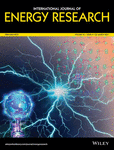An experimental investigation for a hybrid phase change material-liquid cooling strategy to achieve high-temperature uniformity of Li-ion battery module under fast charging
Funding information: National Natural Science Foundation of China, Grant/Award Numbers: 51576142, U1764256
Summary
Fast charging is significant for the convenience of long-term driving. In this study, a hybrid-phase change material (PCM)-liquid cooling system is designed for a battery module with eight prismatic cells under high charging current rates. Temperature rise, temperature distribution, and energy consumption of the cooling system are measured in experiments under 3C, 2.5C, and 2C fast charging. The results indicate that the highest coolant flow rate and the largest PCM thickness cannot achieve the optimal thermal performance. Therefore, appropriate coolant flow rate and PCM thickness selection ensure the cooling performance and reduce energy mass and volume consumption. Experimental results demonstrate that the maximum temperature of the module can be decreased from 43°C to 35.6°C, 34.5°C, and 34.8°C by pure PCM, pure liquid cooling, and the hybrid PCM-liquid cooling system under 3C fast charging; and temperature standard deviation (TSD) can be controlled within 0.9°C, 1.5°C, and 0.96°C, respectively. When the PCM thickness and coolant flow rate are set as 0.65 mm and 54 mL/min, respectively, the hybrid cooling system achieves the optimal thermal performance (maximum temperature: 34.8°C, TSD: 1°C) under 3C fast charging, and the energy consumption (459 J) can be controlled within the acceptable range.




